| |
78
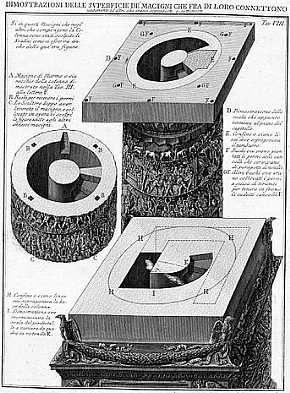
Piranesi, system of connecting segments, Plate from Campo Marzio [sic]
[This plate is actually from Piranesi, Trofio o sia magnifica colonna.]
(Con)Text
A text is not a text unless it hides from the first comer, from the first glance, the law of its composition and the rules of its game. A text remains, moreover, forever imperceptible. Its laws and its rules are not, however, harbored in the inaccessibility of a secret; it is simply that they can never be booked, in the present, into anything that could rigorously be called a perception.
Jacques Derrida, "Plato's Pharmacy," in Dissemination, 1968
In Piranesi, context must be read as text. We have already seen how everything that might be called context is either excluded or fictionalized. The parallels between Piranesi's project and poststructuralist theory need not be enumerated in depth: a return to origins that calls into question the value of the origin; the idea of a critique from within; the notion of architecture's rationality being turned against itself, a critique of the instrumentality of classical reason, of geometry, of "foundations"; the elevation of the marginal and fragmentary to a constitutive position; the ambiguity of frame and subject; of structure and ornament. But what are the consequences of understanding an architectural project as text? And where, precisely, does this insight leave us? How is it possible to enter into this text; what are the terms proper to its analysis.
Tafuri has outlined the profound ambiguity with which the question of language is treated in Piranesi's work. "The problem turns out to be one of language," he begins; but this may simply be a mask for Piranesi's refusal to intervene in the world: "This makes even more significant the fact that the Carceri and the Campo Marzio unequivocably attack 'language insofar as it is a mode of acting upon the world.' All of which means, conversely, to claim an absolute autonomy for that language. But, at the same time, it also means to cover over a disconcerting suspicion regarding the unfeasibility of such an autonomy."16 It is, perhaps, worth pointing out that Tafuri's text (published in Italian in 1971) is itself marked by an intellectual climate in which it was understood that problems of form and meaning could legitimately be reduced to problems of language. But not all language constitutes itself as text. Derrida would argue against the possibility of even a dialectical resolution, denying both the transparency of (discursive) language and the "residual margins of a positive presence."
80
Yet, paradoxically it is also Derrida who seems inclined to call to our attention the objectlike nature of the text, to examine its shape, its surface texture, and to trace its contours.
16Tafuri, The Sphere and the Labyrinth, 34. See also p. 38: "Inasmuch as it is--despite everything--an affirmation of a world of forms, the Campo Marzio, precisely because of the absurdity of its horror vacui, becomes a demand for language, a paradoxical revelation of it absence." On the other hand, Maurice Blanchot has written, "Trust in language is the opposite--distrust of language--situated within language. Confidence in language is language itself distrusting--defying--language. . . . All this is justified on the condition that it (recourse and refusal) be employed at once, at the same time, without belief in any of it, and without cease" (Blanchot, The Writing of the Disaster, trans. Ann Smock [Lincoln, Neb.: University of Nebraska Press, 1986], 38.
| |
Historical Context
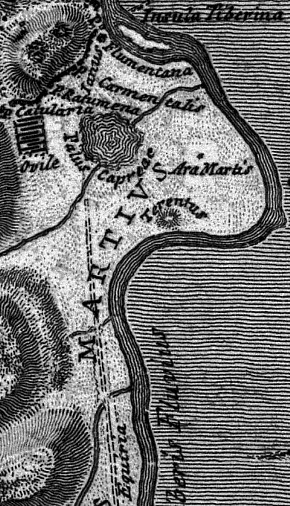
| |
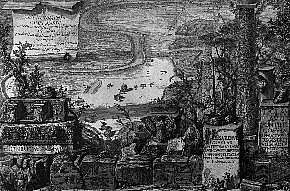
Immediately after the Scenographia, it is two plates of maps serially depicting the historical build-up of the Campus Martius that Piranesi presents in the Il Campo Marzio publication. This series of historical maps is then followed by the Ichnographia Campus Martius.
The earliest map of the Campo Marzio, representing the era from 750BC to 500BC, features the Equiria, the Palus Caprae, the Ara Martius and the Terentus among a few other structures.
The Palus Caprae (or Capreae) was a site within the Campus Martius in ancient Rome. The name means "Goat Marsh" or "the Goat's pool." In myth, the Palus Caprae was the place where Romulus underwent ascension into godhood. The marsh was fed by a stream called Petronia, but by the Augustan period it had disappeared or been drained. The Palus Caprae was in the small basin where the Pantheon was later built...
|
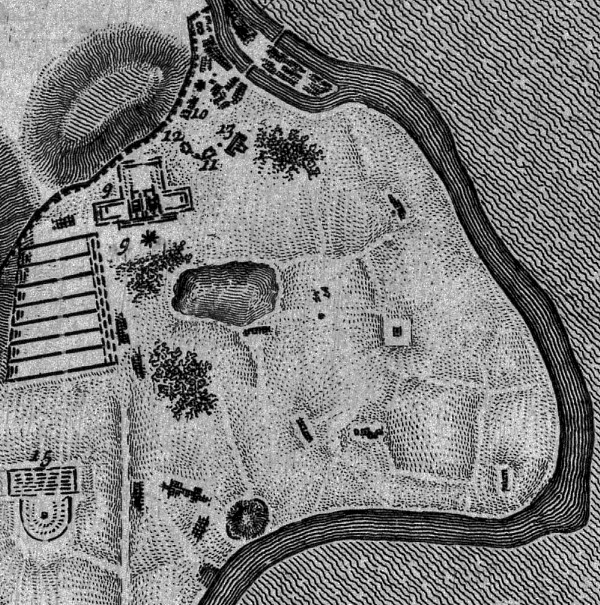
The second map, representing the Campus Martius from 500BC to 225BC, features:
8. Carcer Cl. X. Vir. ,
8. Basilica Caij et Lucij,
9. Villa Publica,
10. Aedes Apollin.,
11. Templum Bellonae,
12. Senatulum,
13. Aedes Herculis Musarum,
15. Septa Trigaria.
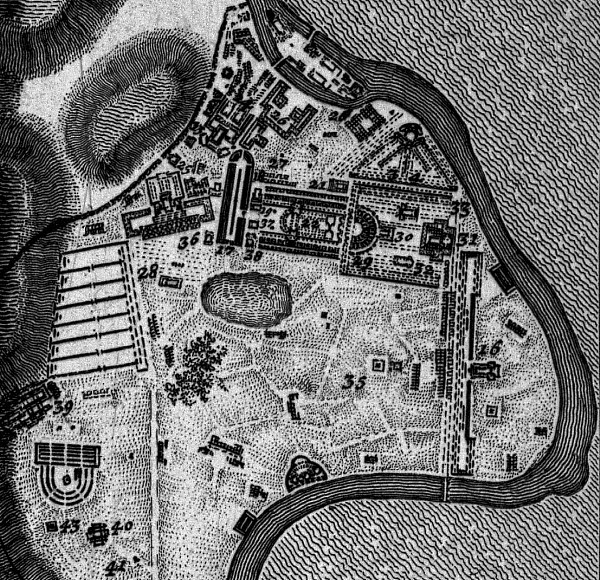
The third map, representing the Campus Martius from 225BC to 44BC, features 14 temples along with:
16. Stadium,
17. Circus Flaminius,
22. Porticus Corinthia cn. Octavij,
23. Porticus Metelli,
31. Porticus Minucia,
32. Domus Pompejana,
33. Hecatonstylon,
34. Horti prius Pompejani deim Marci Antonii,
and various sepulchers.
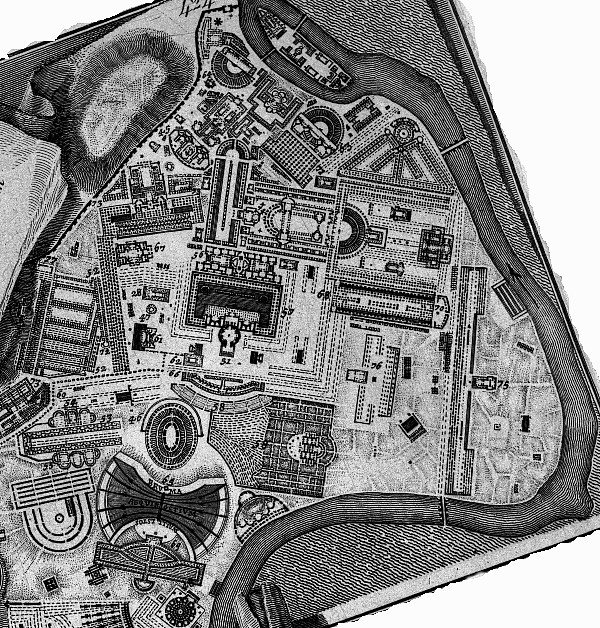
The fourth map, representing the Campus Martius from 44BC to 14AD, the era of Augustus.
For the most part, these maps coincide with the textual content of the Il Campo Marzio publications, which is Piranesi's (architectural) history of the Campo Marzio, evidenced almost entirely with references to ancient texts. Only occasionally does Piranesi delineate the plan of a building within these maps which otherwise has no historical backing.
|